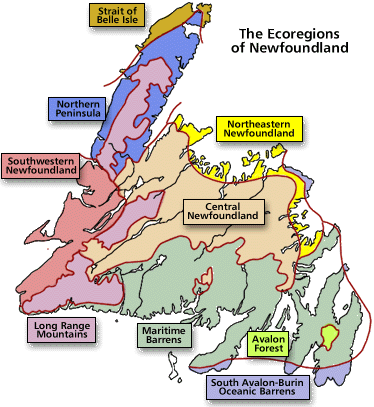Quote:
Originally Posted by someone123

The Acadian forest region is arbitrary but then again it can be useful to arbitrarily subdivide territories when there is no clear cutoff.
In the Maritimes there tends to be pretty unique coastal flora and then there are inland forested areas that are fairly similar to Ontario/Quebec (although the conditions and appearance are still a bit different).
The Atlantic coastal barrens in NS seem to have ~0 overlap with the inland areas in terms of species and they look very different. There aren't many typical deciduous plants. Instead a lot of it looks like oversized moss or succulents. For example there's a wild rhododendron type species and a broom type species and these only grow along the coastal plain (also down in MA and farther south along the coast). These are really neat hiking areas, plus they're somewhat endangered since the parts in the US became so urbanized.
I suspect southern Newfoundland is a bit like this too even though it gets lumped in with boreal areas.
|
It does. The province is broken down into smaller ecoregions:

It's all lumped into Boreal, but there's quite the difference in some spots. Extreme southern NL (South Avalon-Burin Oceanic Barrens) could be mistaken for tundra, there's next to nothing there but land. Maritime Barrens are a mixed bag, it's not really that barren until you're at elevation. Plenty of forest with trees you would expect from a boreal forest...black spruce, balsam fir, white birch, yellow birch, trembling aspen, red maple, mountain ash, white spruce.
Each of these regions are even further broken down into unique forest sub-regions, but I would have to literally find someone's thesis and read it again to break it all down. The prominence of deciduous trees in these sub-regions is completely dependent on how sheltered they are from the elements.